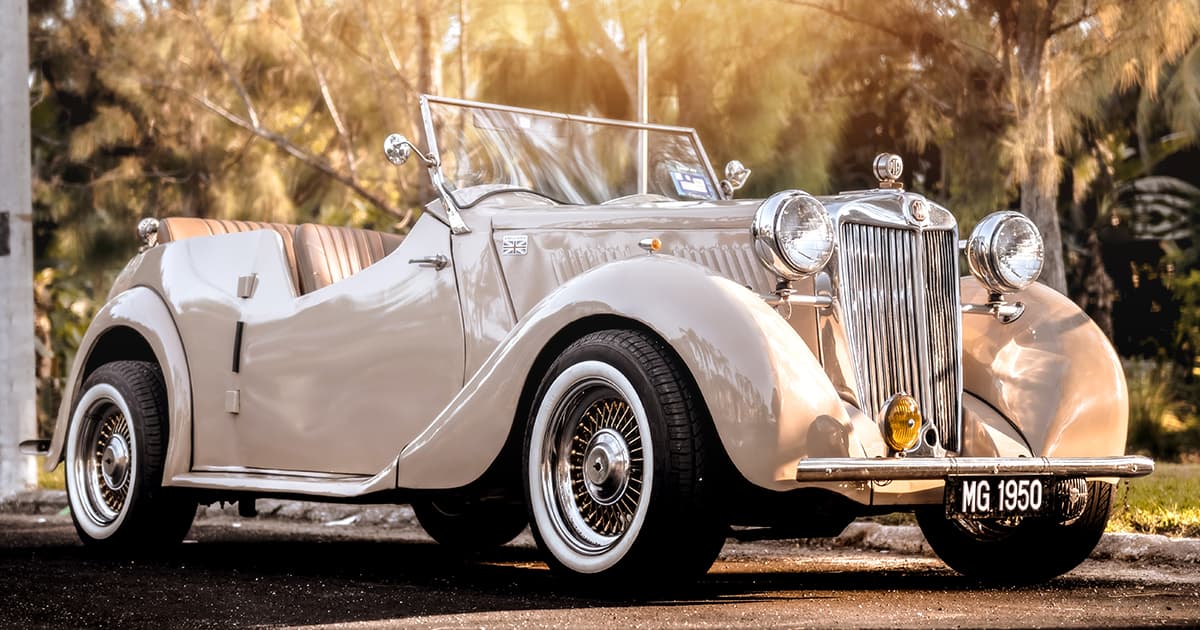How to Protect Your Collector Car with Insurance

Your collector or classic car needs special car insurance coverage. Basic car insurance does not provide enough coverage for a classic car.
Classic car insurance protects your collector, vintage, or antique vehicle from the risks involved with owning a classic car.
A collector car insurance policy offers more coverage than basic car insurance and typically covers your car up to a guaranteed value.
What is the general definition of a classic car for insurers?
Insurers recognize your car as a classic car if it is used for special events and not driven more than 8,000 km per year. It usually needs to be at least 25 years old and should be fully restored and in good condition.
A classic car is considered a collector’s item. It’s at least 20 years old and has not been modified.
It’s also a classic car if it’s driven less than 5,000 kilometres a year and it is not used for regular transportation.
Some insurance providers limit how much you can use your collector car, but you may be able to get flexible usage insurance coverage that does not limit how much you can use your collector car.
What is an antique car?
An antique car is considered a collector’s item. It’s at least 30 years old and has not been modified.
It’s used only for parades and exhibitions. It’s driven up to 5,000 kilometres a year.
How is insurance coverage for a collector car determined
Eligibility for collector car insurance can include:
- Where the car is stored
- How the car is used
- Age and model of your collector car
- Has it been modified or customized
- Who is driving it
- Where you live
- Drivers have a minimum of 10 years of experience
Usually, but not always, to qualify for classic car insurance your vehicle must be 25 years of age or older, although this varies by insurance provider.
What is usually included in collector car insurance?
Collision coverage that protects your collector car in case of an accident.
Third-party liability insurance that covers an accidentally injured person or damaged property.
Comprehensive insurance that protects your collector car from theft, vandalism, or natural disasters.
Classic car insurance typically covers:
- Emergency repairs
- Damage from an accident
- Theft or vandalism
- Fire, storm, and flood damage
- Window glass damage
- Modifications and accessories
Your classic car insurance should have benefits designed for vintage cars such as:
Agreed value
Agreed value is one of the main differences between classic car insurance and personal car insurance. Market value is not a good choice for classic cars. Your collector car should be insured for an agreed value that will be reflected in claims payments.
Lay-up periods
Classic car insurance often takes into account that your classic car will spend a lot of time being maintained, cleaned, or stored, and the premium will be reduced for this reason.
Limited usage
Insurers offer mileage-based discounts because classic cars are not driven often and there will be limits on how much you can drive your classic car.
Modifications
Attachments and modifications to your classic car should be covered by your policy.
Salvage rights
If your classic car is written off, you can keep the unrepaired car and the payout.
Medical reimbursement
If your car is in a car show and someone is hurt in or around it, your classic car insurance should help cover their medical expenses.
Classic cars can include:
- Classic and collector cars made in 1979 or earlier.
- Antique cars made between 1896 and 1948.
- Classic cars manufactured from 1924-1948.
- Popular cars made after World War II.
- U.S.-made muscle cars with V-8 engines from 1968-1972.
- Collector SUVs and trucks that are 25 years old or older or modified 15-year-old or older collector trucks and SUVs.
- Classic cars under construction for restoration projects.
- Commercial vehicles 25 years old or more.
- Car trailers for street rods and vehicles.
- Antique and classic tractors at least 30 years old.
- Demilitarized military vehicles from 1985 or earlier.
Your collector car may be a target for thieves
Classic, vintage, and antique cars are typically more difficult to track down or identify when they’re stolen and they can include parts that are considered valuable.
They are often in high demand, especially in international markets.
Tips for car security to protect your classic, vintage, or antique car:
- Keep collector cars in a locked garage
- Install anti-theft devices for car security
- Don’t leave valuables out in plain sight
- Fully insure your car
What to do if your collector’s car has been stolen?
As soon as you notice your classic car is gone, call the police. Always have your licence plate number, VIN or chassis number, engine number, and all relevant identifying information available to help police get your classic car back.
Ask your Western Financial Group car insurance expert about how to insure your classic car.



